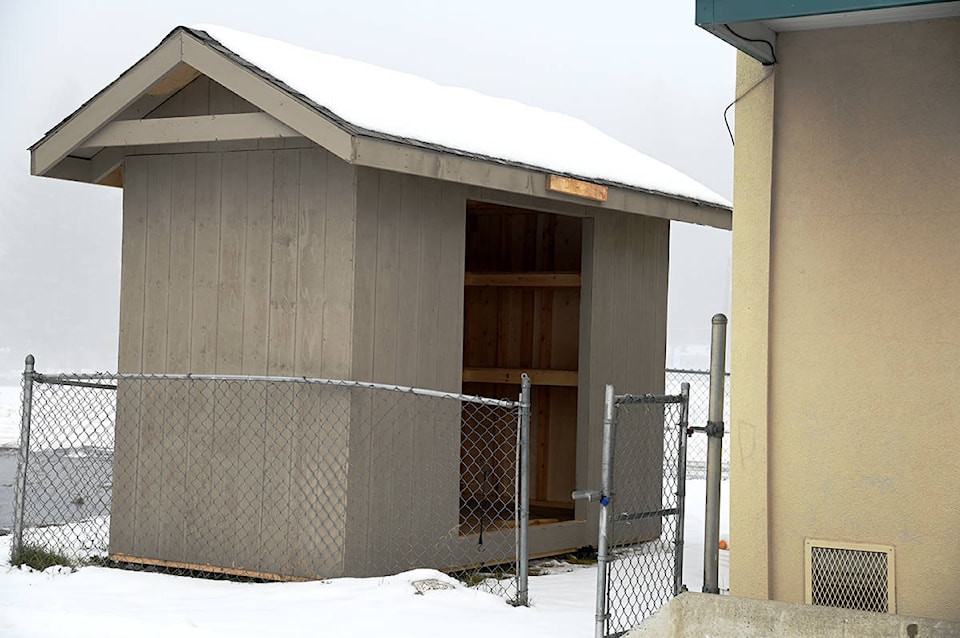When last minute renovations took over the wood shop, Clearwater Secondary School teacher Dayton Fraser had to move his woodworking class outside.
The Grade 10 to 12 class got a taste of the construction lifestyle due to the shop’s dust collection system receiving a much-needed upgrade.
“I found out the day we started (classes),” said Fraser. “So the class shifted from woodworking class to a construction class.”
The students started the semester making sawhorses and picnic tables for the school. Then a request for a couple of sheds came from the community and they jumped on it.
Kerry Milner-Cairns, manager, Dutch Lake Community Centre, reached out to the school asking if the class could build two sheds for the Riverside and Eagle’s Nest day cares.
The sheds will hold the day cares’ seasonal toys like water and sand tables, tobogans and ride-on toys.
“We are just eternally thankful that they would do this for us because the cost has been kept very minimal for YCS (Yellowhead Community Services) and being a non-profit, we don’t have tons of money,” said Milner-Cairns. “It means a lot more that the kids built it for us and it means a lot to the day care kids too. They were pretty tickled pink that the big kids were outside building today for them.”
The students were split into two groups and each were able to do a little bit of everything, spending almost all of their time outdoors.
“We did everything,” said Fraser. “We started framing floors, then the walls, then siding and roofs…it was pretty cool and it’s a pretty legit construction environment.”
The schedule for the CSS students had also been shifted to a quarter system, meaning students took two classes for the first half of the semester and another two the following half, making classes about three hours long. For some courses, like woodworking, the new class length was welcomed as it allowed students to dive into their projects.
For Solamyn Barstow, woodworking is his favourite class, so he signed up for it again this year. The switch to construction work was a welcomed surprise.
“At first it was supposed to be a woodwork class, and that’s my favourite class, but this ended up being what we got and I enjoyed it as well,” he said. “I was kind of excited because it’d be cool to do this sort of this sort of stuff and carpentry would be something that I would do as a career.”
Barstow added the sheds were his favourite project to work on because they gave a glimpse into how a house might be built (though a smaller scale, of course).
In woodworking class, students learn how to use planers and joiners, as well as table saws. With the shift into construction, though, students used basic tools such as a hammer nails, as well as power tools — equipment that might be more accessible.
“A lot of them aren’t going to have access to planers and jointers and table saws going through life, but they might have a screw gun and access to a circular saw,” said Fraser. “And to be able to do it and have the confidence to do it is pretty cool.”
Both Isabella and Noelle took the woodworking class in Grade 8, so thought it a good idea to take it again in their graduating year. However, they were both a little shocked when the class was moved outside and had a focus on construction.
The longer class time also made it a bit tough, but both ladies said they came out the other side with a little more confidence and comfortability than when they started in September.
“Using some hand tools, like the circular saw especially, I was kind of scared of it coming into this class, but I learned how to use it,” said Noelle.
Isabella added that while she thought she’d need a lot of help, she soon found herself completing tasks with more independence that expected.
“I still need help,” she said. “But (I’m) more comfortable, for sure.”
